Mad Hedge Biotech & Healthcare Letter
August 3, 2021
Fiat Lux
FEATURED TRADE:
(SHAKING UP THE BIOTECHNOLOGY AND HEALTHCARE INDUSTRY)
(PSTX), (PFE), (NVS), (GILD), (GSK), (BLUE), (CRSP), (EDIT)

Mad Hedge Biotech & Healthcare Letter
August 3, 2021
Fiat Lux
FEATURED TRADE:
(SHAKING UP THE BIOTECHNOLOGY AND HEALTHCARE INDUSTRY)
(PSTX), (PFE), (NVS), (GILD), (GSK), (BLUE), (CRSP), (EDIT)

With the advancement of biotechnology and healthcare, it’s not hard to imagine a future where drugs and therapies will be tailored to every person’s unique genetic profile.
Thanks to the continuous work on mass customization in the world of pharmaceuticals and even in whole genome sequencing, it’s only a matter of time before we can come up with a personalized pill for each popper.
Nowadays, robotics and automation have started to become tightly integrated with the medical arena. In fact, robotics in the field of pharmaceuticals is no longer anything novel.
The majority of drug manufacturers across the globe are already utilizing robots to address their needs, such as packaging and warehouse storage.
What interests me most, though, is how automation plays an active role in developing actual therapies. After all, doing this entails so much more than simply feeding codes to robots to teach them how to move test tubes around a lab.
One company that has been gaining traction in this space is Multiply Labs. Established in 2016 with roughly $22 million in funding thus far, this San Francisco company aims to be a force multiplier not only in creating personalized pills but also cell therapies.
Run by mostly MIT graduates, Multiply Labs started out by letting their robots take 24-hour shifts to quickly deliver biologic drugs needed for clinical trials.
That offers tremendously faster turnaround times and shorter waiting periods for researchers and pharmaceutical companies.
Since virtually perfecting that process, the company has decided to expand its focus to handle more challenging and complex work.
Now, it has set its sights on using its robotics platform to ease bottlenecks in the development of cell therapies.
As we know, cell therapies are regarded as powerful tools in the battle against cancer. However, the production process is extremely labor-intensive. This makes their development incredibly expensive.
Let’s take CAR-T cell therapy, which boosts the body’s immune system to help it fight off cancer, as an example.
In CAR-T cell therapy, scientists need to extract blood from the patient. Then they’d have to isolate the immune cells, which they would need to genetically engineer.
After that, they have to carefully grow the new cells. Finally, they’d inject these genetically engineered new cells back into the patient.
In most cases, every step needs to be repeated for individual patients.
What Multiply Labs is trying to do is automate several stages, such as genetically altering the harvested cells, which can only be performed by highly trained professionals.
Not only will they be able to cut down on the time needed to complete the procedures, they would also be able to reduce—if not completely eliminate—human error.
Aside from working with the University of California San Francisco, Multiply Labs has been collaborating with Cytiva, a subsidiary of Dannaher (DHR), to move their services closer to commercialization.
Apart from Multiply Labs, another San Francisco company has been working on improving the expensive, logistically complicated, and oftentimes error-filled cell therapy space: Cellares.
Unlike Multiply Labs, which aims to ease the bottleneck in the cell therapy creation process, Cellares’ goal is to handle the entire procedure on its own.
Dubbing its work as the “Cell Shuttle,” what Cellares offers is basically a “factory in a box” solution to the creators of cell therapies.
Basically, the “Cell Shuttle” is an end-to-end solution that comes in the form of a box designed to deliver an automated cell therapy platform. Cellares’ product handles everything from beginning to end, starting from taking in the cells of the patient to injecting the genetically engineered versions back into the individual.
Raking in roughly $100 million in funding so far, Cellares’ plan is to allow the pharmaceutical companies to scale and deploy the “Cell Shuttle” based on their needs.
To date, Cellares’ latest collaborator in this venture is Poseida Therapeutics (PSTX).
However, there are thousands of cell-based and cell therapy clinical studies conducted across the globe. The cell and gene therapy (CGT) sector is projected to be one of the fastest-growing markets in the healthcare sector, with the segment estimated to reach $14 billion by 2025.
Moreover, CGT offers promising treatments for severe and chronic conditions like obesity, diabetes, and, of course, cancer. It can also be the answer to rare genetic conditions and their related complications.
That’s why it comes as no surprise that Big Pharma names like Pfizer (PFE), Novartis (NVS), Gilead Sciences (GILD), and GlaxoSmithKline (GSK) are taking interest in this niche.
However, the progress of smaller companies, such as bluebird Bio (BLUE), CRISPR Therapeutics (CRSP), and Editas Medicine (EDIT), also offers incredible potential in this space.
And while Poseida Therapeutics may be the first to collaborate with the likes of Cellares and Multiply Labs, the rest would undoubtedly follow suit in integrating robotics and healthcare in the near future.
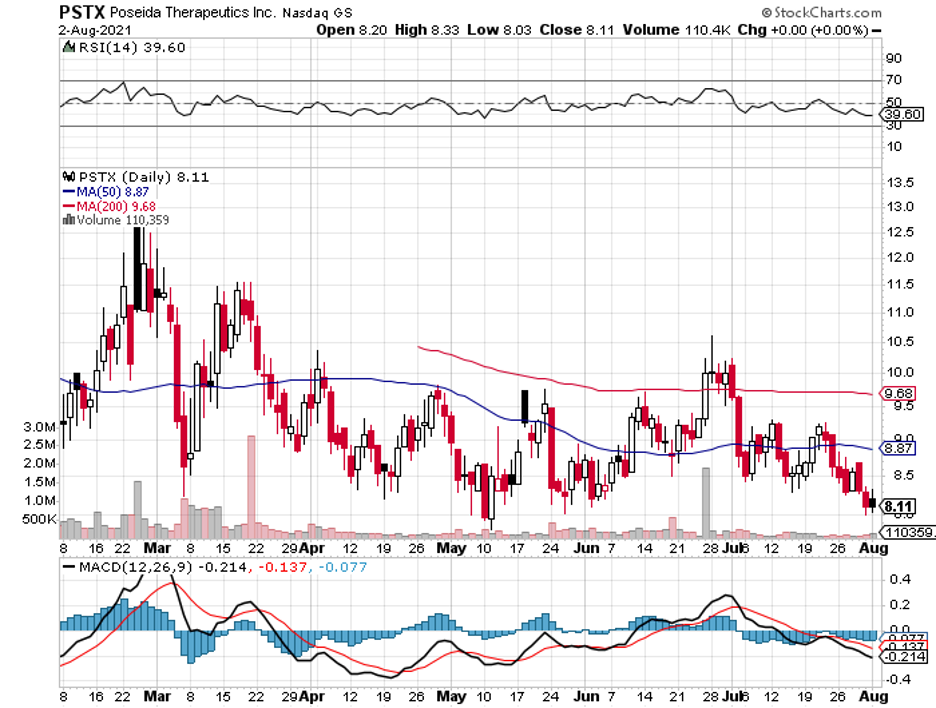
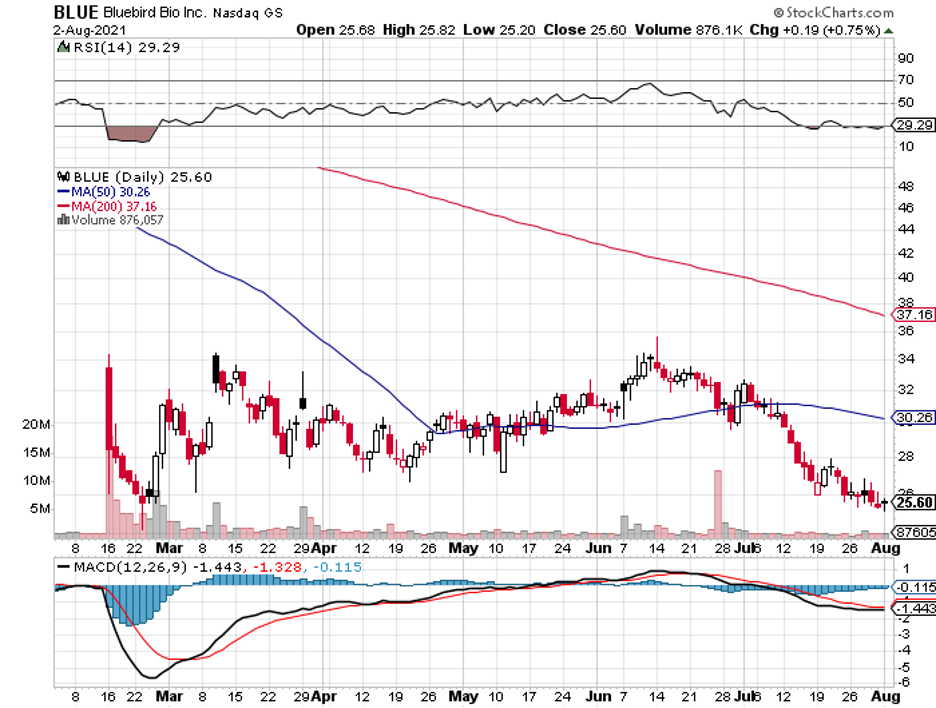
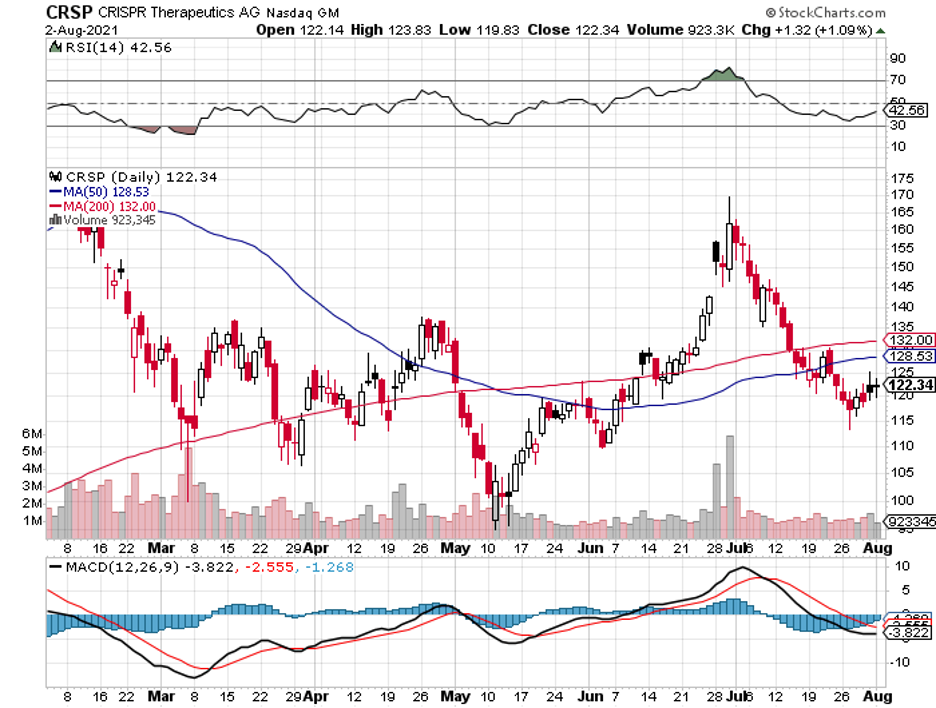
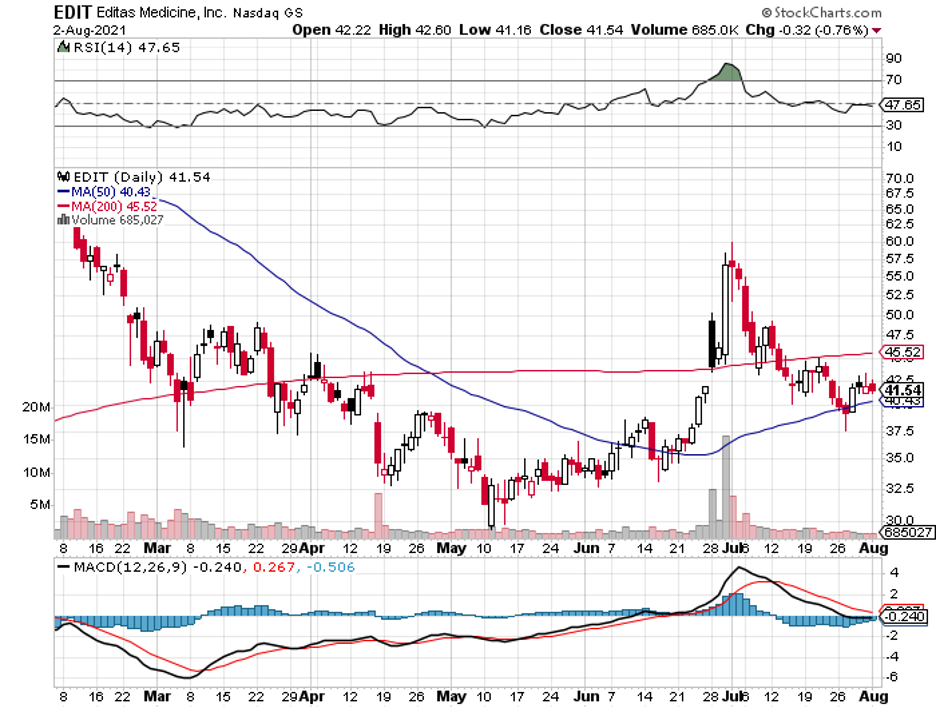
Mad Hedge Biotech & Healthcare Letter
July 8, 2021
Fiat Lux
FEATURED TRADE:
(TURNING THE BIOHACKERS’ DREAM TO REALITY)
(NEO), (AZN), (GSK), (ABBV), (ILMN), (TMO), (TXG), (BLUE), (CRSP), (EDIT)

There is a huge possibility that the first person to ever live to a thousand years old has been born in our lifetime.
That’s according to experts on life longevity. They also say that sooner rather than later, we’ll simply be checking ourselves into hospitals or clinics once every decade.
Pretty much how you’d bring your car in for a service, that’s how we’ll keep our bodies working at peak condition for centuries.
As far-fetched as it sounds, it’s undeniable that dreams of achieving immortality are as old as mankind itself.
One of the leading experts on this is the Human Longevity, Inc., which has leading genomics expert J. Craig Venter and billionaire Peter Diamandis as its founders.
Although it’s still not yet a publicly-traded company, Human Longevity, Inc. has been collaborating with cancer diagnostics firm Neogenomics (NEO).
Admittedly, NEO’s $5.32 billion market capitalization doesn’t really boost that much confidence in this company.
However, Human Longevity’s work with a Big Pharma company like AstraZeneca (AZN), which holds a market cap of $158.14 billion, definitely backs up its claims.
Moreover, AstraZeneca and Human Longevity are already halfway through their 10-year agreement that dates back to 2016.
Basically, what Human Longevity does is sequence an individual’s DNA and combine the information with an extensive list of tests to figure out how long that person will live and what steps can be taken to extend his or her life.
More impressively, the company can use the data to predict a budding disease, such as cancer, even before it exhibits symptoms.
And how much will that cost you?
Right now, the company is charging $25,000 for a comprehensive set of tests and a full profile.
In the end, you’d be given medical information about yourself that amounts to roughly 1 petabyte. For context, that’s 1,000 terabytes or 1 million GB worth of data.
While the cost is definitely high, it’s a good preventive measure to consider if you can spare the cash.
This is because the company can detect the slightest hint of diseases, which are typically at their most treatable phase.
Since the company is founded on the belief that we are all “DNA software-driven species,” it can also determine the disease-producing genes in our systems and use them as “pharmaceutical targets, so that people with those genetic changes don’t die.”
Aside from Human Longevity, another company working on this nice is called Life Biosciences, which was founded in 2017.
Since its launch, Life Biosciences has been acquiring companies left and right to boost its pipelines.
So far, it has at least 6 subsidiaries focused on developing treatments to fight the human aging process.
What makes Life Biosciences different is that it doesn’t focus on the leading causes of death, such as cardiovascular diseases or cancer.
Instead, it tries to figure out what are the underlying causes of the body’s aging. This includes stem cell exhaustion, cellular senescence, chromosomal instability, and even our metabolism.
At their core, Life Biosciences’ belief is that aging itself should not be considered a natural biological result of the passage of time.
Rather, it should be understood as a medical condition—the kind that can be treated in the same way we’d try to find medications or cures for diseases.
While Life Biosciences’ work has yet to earn any FDA approval, the involvement of GlaxoSmithKline (GSK) in its aging research seems to boost confidence in the company’s work.
Apart from GSK, a number of tech billionaires have expressly backed these efforts in the anti-aging field.
The most visible ones include Calico, which is backed by Google and AbbVie (ABBV), and Unity Biotechnology, supported by Jeff Bezos.
While Human Longevity and Life Biosciences have yet to go on IPO, there are already companies working on fields related to life longevity.
The first names that come to mind are the frontrunners of the genome sequencing market, such as Illumina (ILMN), Thermo Fisher Scientific (TMO), and 10x Genomics (TXG).
Smaller companies in this field include bluebird Bio (BLUE), CRISPR Therapeutics (CRSP), and Editas Medicine (EDIT).
Inasmuch as this is difficult to grasp at this stage, there is a massive market for this industry. In fact, the global longevity segment is projected to reach $27 trillion in 2026, which accounts for roughly 20% of the global GDP.
Meanwhile, the global market for human aging is estimated to reach at least $55 billion by 2023.
And those are just conservative estimates.
Making the public accept the idea behind longevity science has not been easy. Even with Big Pharma names backing these innovative companies, people are still wary of the concept.
After all, surveys show that most people would refuse medical treatments to slow their aging and allow them to live up to 120 or older. It’s not surprising why.
Those respondents probably witnessed how their older grandparents and parents spent their final years in pain and were subjected to invasive medical procedures. That makes the entire idea of living so long horrific to them.
However, the future imagined by these companies is different. Through their research, people can live long and still enjoy active and healthy lifestyles.
At this point, the longevity science space remains a playground dominated by a handful of transhumanists and even biohackers.
Nonetheless, the entry of the most respected researchers and the support from the biggest biopharmaceutical companies across the globe give hope that the promises the industry holds will become a reality soon.

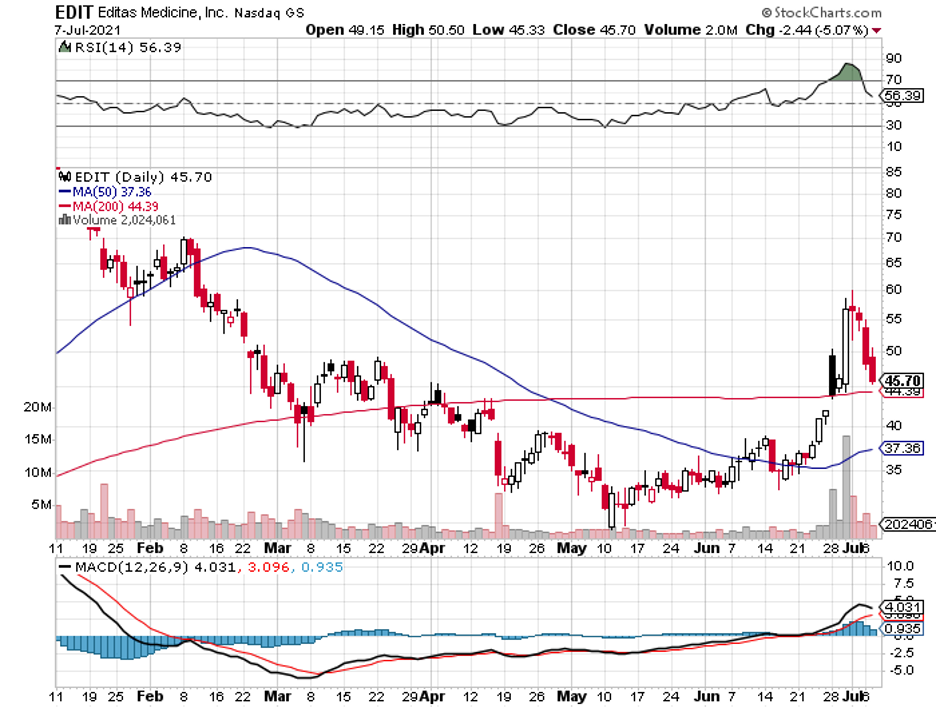
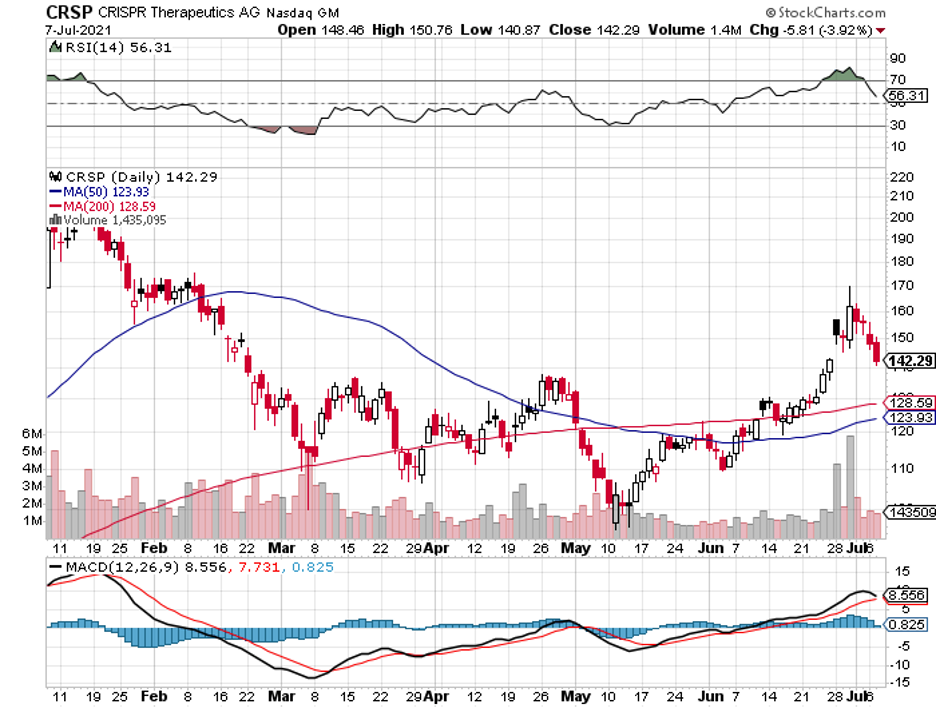
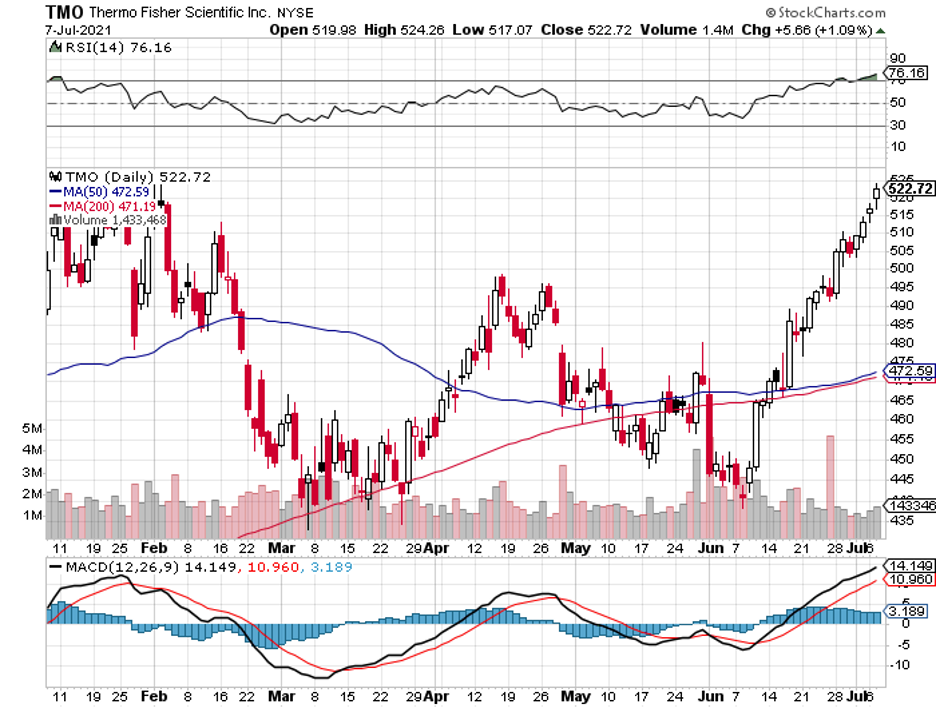
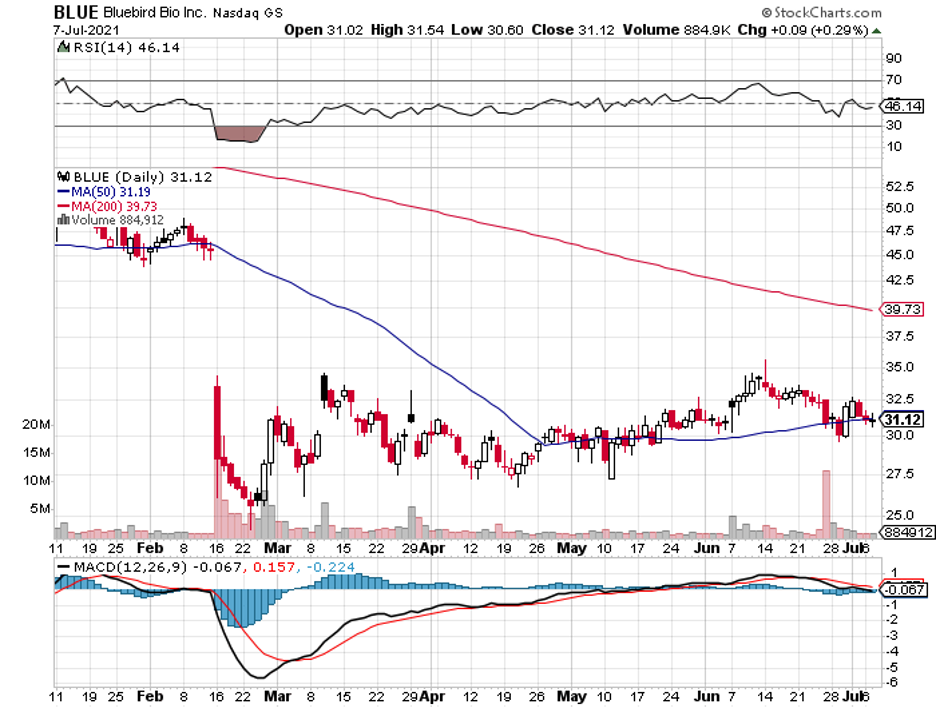
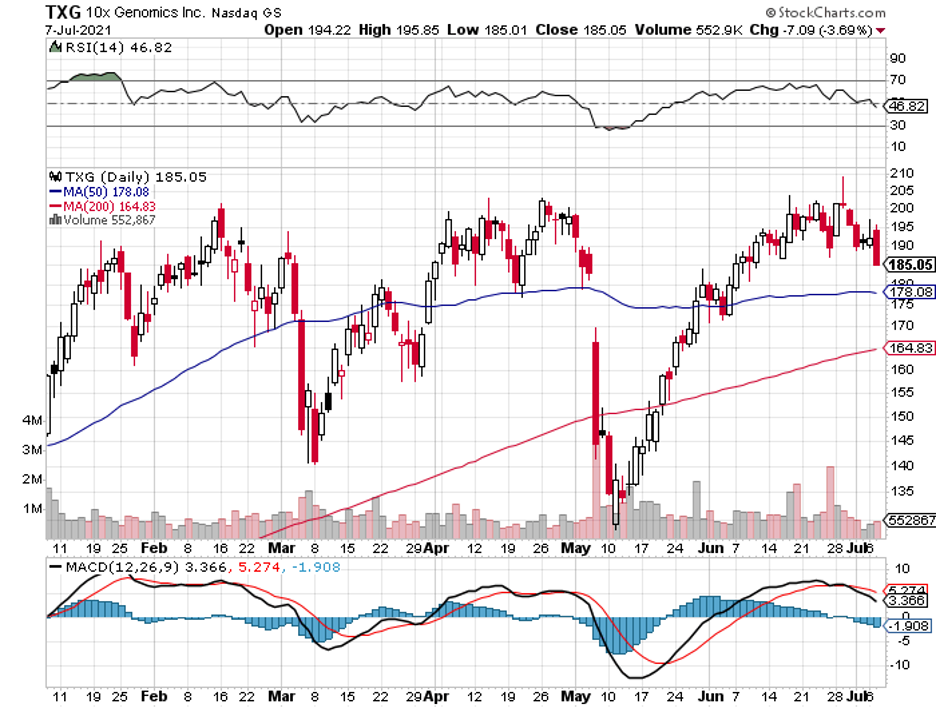
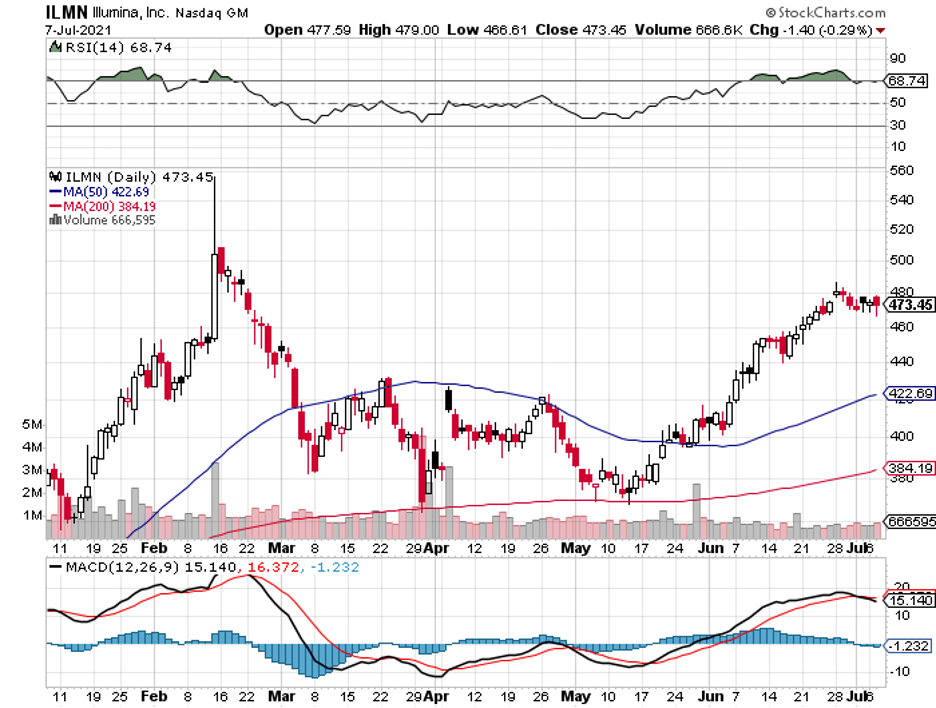
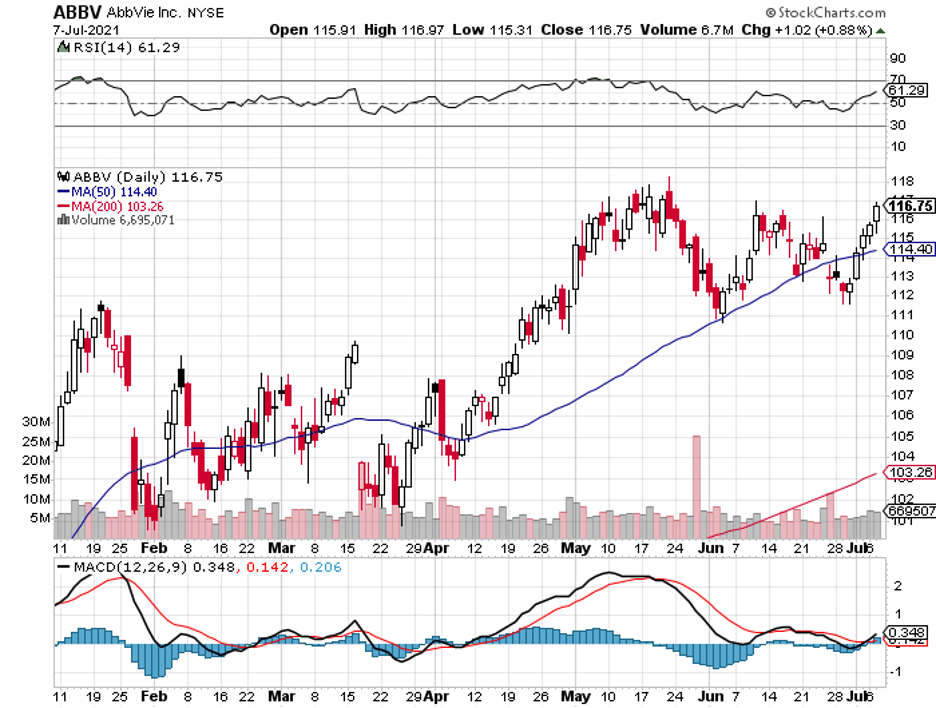
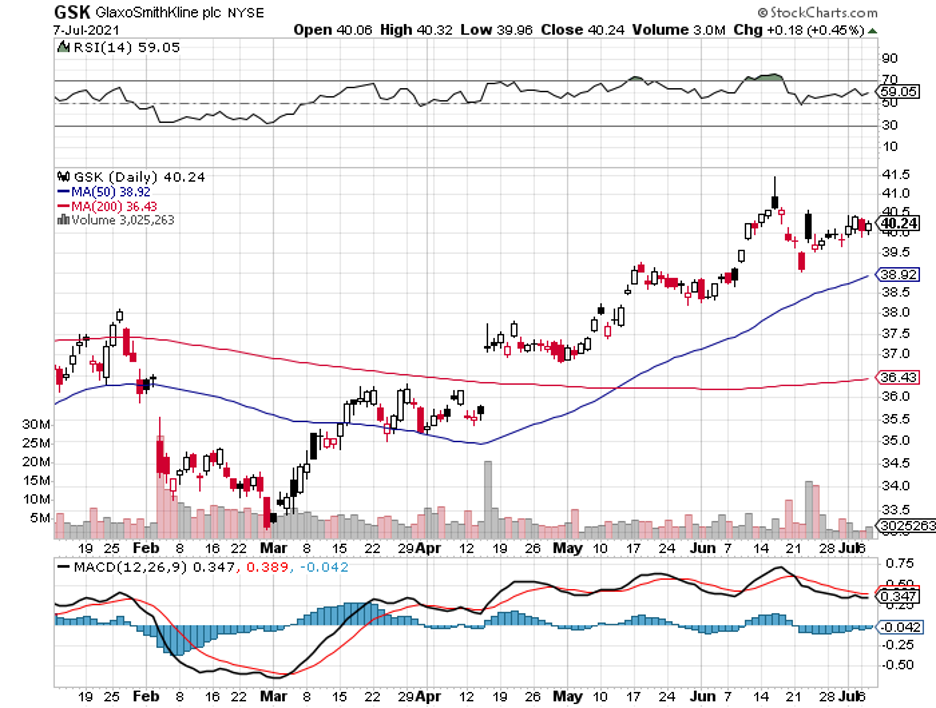
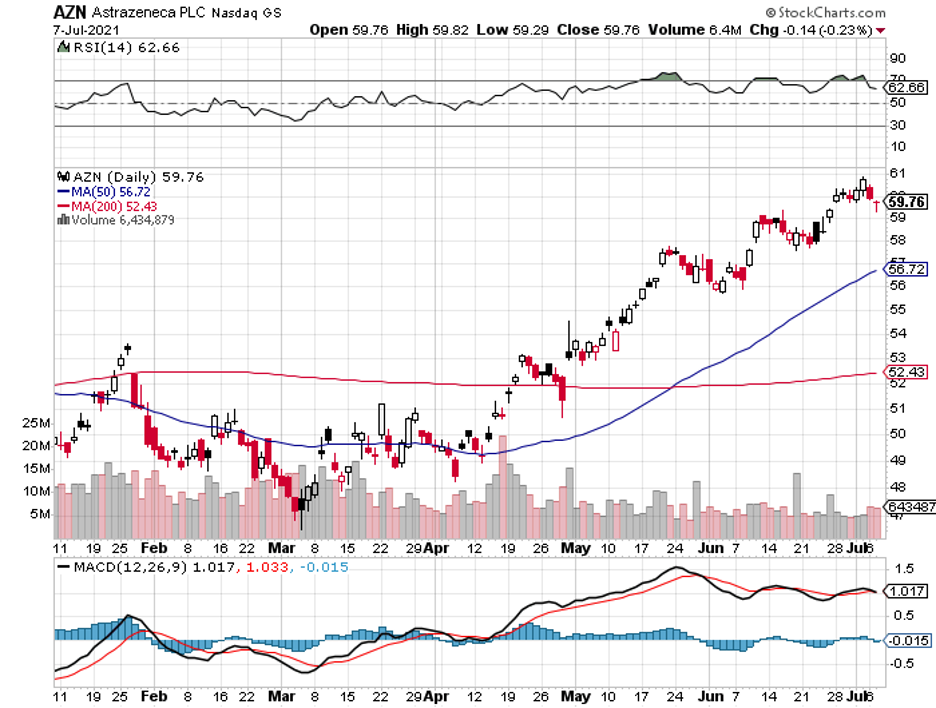
AbbVie (ABBV) is the seventh biggest biopharmaceutical company worldwide in terms of revenue.
If you’re on the lookout for stocks that also offer juicy dividends, then this is a good company to add to your list alongside Dividend Aristocrats like Johnson & Johnson (JNJ) and Pfizer (PFE).
Since its split from Abbott Labs (ABT) back in 2013, AbbVie has increased its revenue by roughly 2.5 times.
In just a few years post-spin-off, its profits have grown from $18.8 billion to an impressive $46 billion in the last fiscal year.
A huge chunk of AbbVie’s growth is attributed to its blockbuster drug Humira, which is the number one selling drug in 2020 with a whopping $19.8 billion in net revenue.
That’s why it comes as no surprise that the drug’s impending loss of patent exclusivity in the US in 2023 is a major pain point for AbbVie investors.
However, it looks like AbbVie has positioned itself well into a future without Humira.
Although Humira does lead AbbVie’s immunology portfolio, the company’s other products in this lineup are also promising.
Up-and-coming drugs Skyrizi and Rinvoq both reported doubled annual sales from 2019 to 2020, with the two expected to bring in $15 billion by 2025.
Actually, Rinvoq is slated as the successor to Humira and is groomed as a “key growth driver” through 2026.
Putting money where its mouth is, AbbVie has performed notably in the first quarter of 2021 with a 50% increase from its 2020 net revenue to hit over $12.94 billion.
Its net profit also saw a double-digit bump of 18% to reach $3.55 billion.
Despite off-patent woes, Humira still enjoyed a 3.5% uptick in sales to rake in $4.9 billion for the quarter.
Meanwhile, AbbVie’s aesthetic product line showed off an impressive 35% jump during the period, adding over $1.1 billion to revenue.
Reflecting the good news this quarter, AbbVie boosted its profitability guidance for 2021.
From an adjusted per-share net profit in the range of $12.32 to $12.52, the company now estimates it to be somewhere between $12.37 and $12.57.
Diversification has also been explored, with AbbVie veering from immunology and venturing into other segments like oncology, eye care, neuroscience, and even aesthetics.
One way AbbVie has been filling the Humira revenue gap is via acquisitions.
In 2015, the company acquired Pharmacyclics. This deal added a blockbuster drug, Imbruvica, in AbbVie’s lineup.
In 2020, Imbruvica generated roughly $4.7 billion in sales.
With an estimated compound annual growth rate of 26.5%, Imbruvica is projected to reach approximately $31.8 billion in sales through 2025.
On top of that, AbbVie has filed a slew of patents to restrict generic competition against Imbruvica until at least 2035.
Another major acquisition is Allergan, which added roughly 120 new products under AbbVie’s banner following the deal’s completion in May 2020.
Collectively, these products brought in $16 billion in sales in 2019 for Allergan—a noteworthy performance that translated to AbbVie’s 2020 revenue, which grew from $33 billion in 2019 to $45.8 billion a year later.
Perhaps the most notable addition from the Allergan acquisition is Botox.
In 2019, this drug raked in roughly $2.7 billion in sales. Similar to Imbruvica’s potential, Botox also presents a powerful growth runway.
In fact, this Allergan blockbuster is estimated to generate more than $13.4 billion in revenue by 2026.
Apart from the additional 120 products it injected into AbbVie’s portfolio, Allergan also queued 60 more development programs, which could generate at least $2 billion in sales by 2023.
AbbVie is one of the more innovative and newer biopharmaceutical companies to take the biotechnology and healthcare market by storm. Given the company’s strong pipeline programs, it’s definitely poised for more robust growth.
Spun off from Abbott Labs in 2013, this company currently sits at a massive market capitalization of roughly $205 billion.
If its portfolio, pipeline programs, acquisitions, and recent first-quarter earnings reports can tell us anything, it’s that AbbVie still has a lot of room to grow. Hence, it’s good to buy the dip.
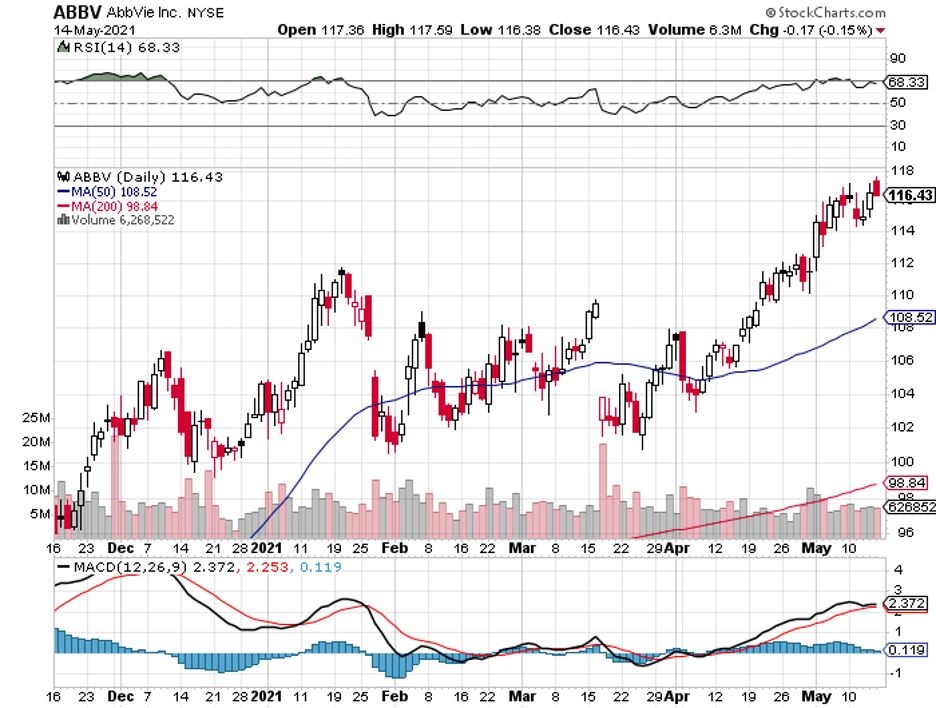
Mad Hedge Biotech & Healthcare Letter
May 11, 2021
Fiat Lux
FEATURED TRADE:
(A FALLEN BIOTECH OUTPERFORMING THE MARKET)
(VRTX), (ABBV), (CRSP), (BLUE)

Despite the exceptional performance of a handful of biotechnology companies, many healthcare stocks have languished over the course of the last 12 months due to the extra costs and added uncertainty brought by the COVID-19 pandemic.
Amid its continuous success for almost a decade, with shares climbing by over 800% from 2012 to mid-2020 and outpacing the S&P 500 nearly four times over, Vertex Pharmaceuticals (VRTX) stock was not spared during this turbulent period.
In fact, shares of the company fell by roughly 25% in mid-October following their decision to cancel the development of VX-814.
This once-promising drug, which was initially expected to treat a genetic disorder affecting the liver and kidney, showed disappointing results in its trials last year.
Despite falling out of favor with investors, I think this $55.66 billion-by-market-capitalization biotechnology company holds a strong track record and remains a compelling buy—a fact proven by its first quarter earnings report.
Vertex recorded $1.72 billion in revenue for the first quarter of 2021, showing off a 14% year-over-year jump and topping the projected estimate from analysts of $1.66 billion.
The company also reported a notable improvement on its bottom line, with an adjusted net income of $781 million or $2.98 per share.
In comparison, Vertex recorded $674 million in earnings or $2.56 per share during the same period in 2020.
This embattled biotechnology company marked the end of the first quarter with a total of $6.9 billion in cash, cash equivalents, and marketable securities, exhibiting a $265 million increase from the end of 2020.
Although Vertex anticipates a slowdown in its revenue growth this year, it still projects a full-year sale in the range of $6.7 billion and $6.9 billion.
To see if this is realistic, let’s take a look at the company’s current drug portfolio.
The core of Vertex’s business is its cystic fibrosis (CF) lineup. Without treatment, this disease could lead to the early death of patients.
At the moment, Vertex has four approved CF drugs out in the market: Kalydeco, Orkambi, Symdeko, and Trikafta.
With the extent of patient profiles that these four drugs cover, Vertex has virtually cornered the CF market and established a monopoly.
To date, roughly 50% of cystic patients in the US, Australia, Canada, and Europe are treated using Vertex drugs.
Among the four, Trikafta appears to have the potential to become a blockbuster.
Trikafta is forecasted to take the lion’s share in the CF market in the next few years, with its revenue rising from $3.8 billion to $8.9 billion by 2026. This would translate to a growth in Vertex’s CF program from $6.2 billion to $9.6 billion.
While skeptics might assume that the growth projection is too high, it’s important to remember the trajectory of the Trikafta-Kaftrio drug.
The revenue of this combo grew from $420 million in 2019 to a whopping $3.86 billion in 2020.
Given that CF has become a lucrative market, it no longer comes as a surprise that competitors are starting to swarm the space.
Vertex’s biggest rival in the space so far is AbbVie (ABBV), which has been working on triple combinations of its own drugs.
Apart from its CF programs, Vertex’s pipelines also serve as catalysts for its growth.
Although VX-814 failed and caused the company’s shares to fall in 2020, Vertex has another candidate, VX-864, which has been showing more promising results as of late.
You might be wondering why Vertex insists on working on this drug despite the backlash it suffered last year. This is primarily rooted in the potential of the product.
VX-864, if successful, could be the next CF-like moneymaker for Vertex. By 2026, sales for this drug are estimated to reach $640 million and will peak by 2030 at $1.1 billion.
On top of these, Vertex has collaborated with CRISPR Therapeutics (CRSP) to develop gene therapy for sickle cell disease. So far, the treatment has received a fast-track designation from the FDA.
If approved, their drug, CTX-001, will directly compete with bluebird bio’s (BLUE) LentiGlobin.
The current pricing for bluebird’s therapy is $1.2 million.
To date, there are roughly 250,000 patients suffering from sickle cell disease in the US and Europe. Among them, 25% are diagnosed to be in the severe stages. This is the market that CTX-001 aims to target.
Using the pricing of LentiGlobin as the basis, CTX-001 has the potential to reach $1.6 billion in sales in 2026 and peak at $2 billion in 2029.
If the two companies succeed in this, then CTX-001 is another blockbuster drug added to Vertex’s portfolio.
Overall, Vertex is a good long-term investment stock. It has a proven track record and a healthy pipeline filled with promising candidates. I say you should take advantage and buy the dips.
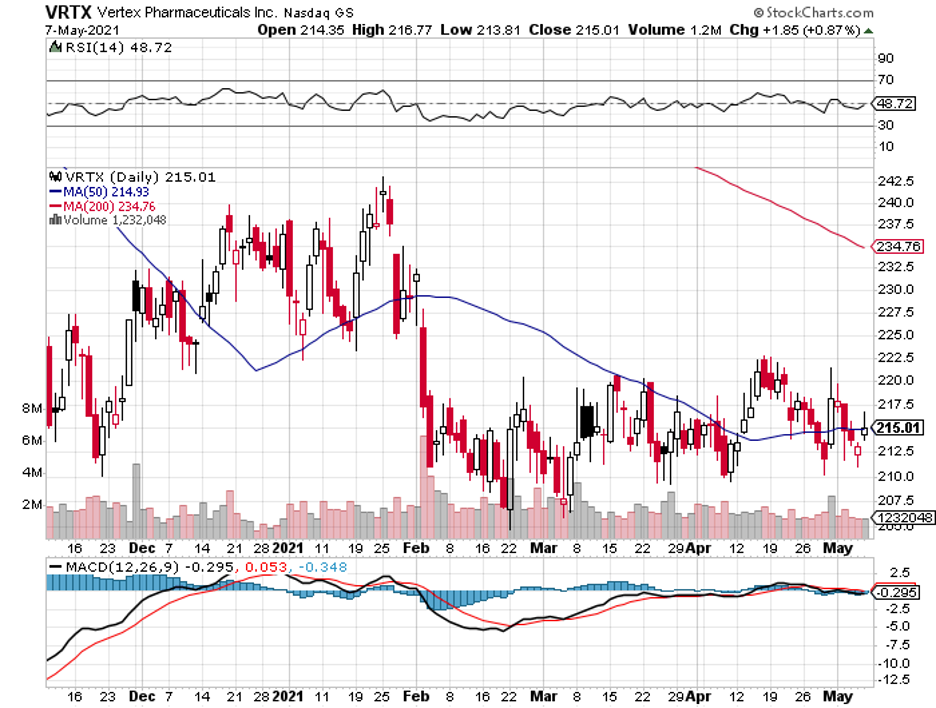
Mad Hedge Biotech & Healthcare Letter
January 28, 2021
Fiat Lux
FEATURED TRADE:
(WATCH OUT FOR THESE BUYOUT STOCKS)
(TBIO), (MRNA), (PFE), (BNTX), (SNY), (BLUE), (BMY)

Many predictions this 2021 probably won’t pan out. However, here’s a pretty safe bet: we will see a number of biotechnology company acquisitions this year.
Although it’s not easy to accurately forecast which biotechnology companies will be involved in these deals, there is a handful that qualifies as prime acquisition targets.
One of the top biotech buyout candidates in my radar this year is Translate Bio (TBIO).
Thanks to the massive success of the COVID-19 programs of Moderna (MRNA), Pfizer (PFE), and BioNTech (BNTX), a spotlight has been cast on the benefits of the messenger RNA (mRNA) technology.
That’s why I wouldn’t be surprised if bigger players in the healthcare industry decide to scoop up smaller players to stake a claim in this quickly growing space.
Among all the small-cap biotechs in play, Translate Bio is easily one of the top prospects.
Before Moderna and BioNTech hogged the spotlight with their mRNA-based COVID-19 vaccines, Translate Bio was actually one of the strong contenders in the race. Unfortunately, it failed to keep up with its peers and is now lagging well behind the leaders.
On the flip side, the attention that mRNA technology has been getting these days seemed to have strengthened the confidence of investors in the technology – an effect that Translate Bio greatly benefited from in the past months.
Despite its lagging performance in the COVID-19 race, Translate Bio has been making significant progress with its work with partner Sanofi (SNY) on their own candidate, MRT5500. If all goes well, then the product should be out by the first quarter of 2021.
Apart from that, the two have been focusing on different vaccine candidates for other viral and bacterial diseases.
Translate Bio’s pipeline also includes treatments targeting another lucrative market using the same MRT platform technology as MRT5500: cystic fibrosis (CF).
The company’s CF treatment has been causing excitement among investors because instead of offering invasive therapy, this option offers patients an inhaled version of the mRNA drug as treatment.
Moreover, the MRT platform technology of Translate Bio could be expanded to cover more than just CF – a promising diversification that encouraged big investors like Sanofi to continuously pour money into collaborations with this Massachusetts-based biotech.
As mRNA technology gains more traction, Sanofi might even reevaluate its relationship with Translate Bio and decide that it wants more than just a collaboration.
With the smaller biotech company’s modest market capitalization of only a little over $1.7 billion, an acquisition could be on the table sooner rather than later.
Another potential buyout candidate is Bluebird bio (BLUE).
Unlike its contemporaries in the biotech space, Bluebird shares plunged by nearly 50% in 2020.
Although the company offers a promising upside potential, it can’t seem to generate sufficient enthusiasm to take part in the biotech sector’s rally last year.
In fact, Blue stock continued to hover near its 52-week low despite several gene and cell therapy tickers reaching all-time highs.
While that’s obviously bad news for Bluebird shareholders, I think this makes the company an even more attractive acquisition candidate.
I think it’s important to determine the reasons behind Bluebird’s abysmal 2020 performance.
The stock had a rocky start last year, with the COVID-19 pandemic exacerbating its overall meltdown.
One of Blue’s major roadblock was its failure to secure approval from the FDA for its multiple myeloma treatment, which it has been working on with Bristol Myers Squibb (BMY).
Then, it delayed its submission for approval of its sickle cell disease treatment LentiGlobin. This was initially set for the second half of 2021 but was pushed to late 2022.
The main takeaway from this streak of negative updates is that Blue still doesn’t have its act together when it comes to dealing with regulatory approval processes.
Regardless, the potential of this biotech’s pipeline remains impressive.
Apart from its work with Bristol and LentiGlobin, Bluebird has been working on a late-stage candidate for treatment of a rare metabolic disorder called cerebral adrenoleukodystrophy with Lenti-D.
Prior to its partnership with Bristol, Bluebird was actually partnered with Celgene.
When Celgene was bought by Bristol in 2019, the bigger company continued the collaboration with Blue and expanded the partnership to cover more genetic disorders and extend to oncology treatments.
Due to the setbacks, Bluebird’s market capitalization now hovers somewhere near $3 billion.
Given all these pipeline candidates and its future plans, I suspect it wouldn’t take long before a major player takes notice of this attractive valuation and puts this bird in a cage.
Overall, both Translate Bio and Bluebird are solid companies in the biotechnology space.
While the COVID-19 pandemic slowed down some of their progress, the products in their pipelines could yield substantial value to interested acquisition partners.

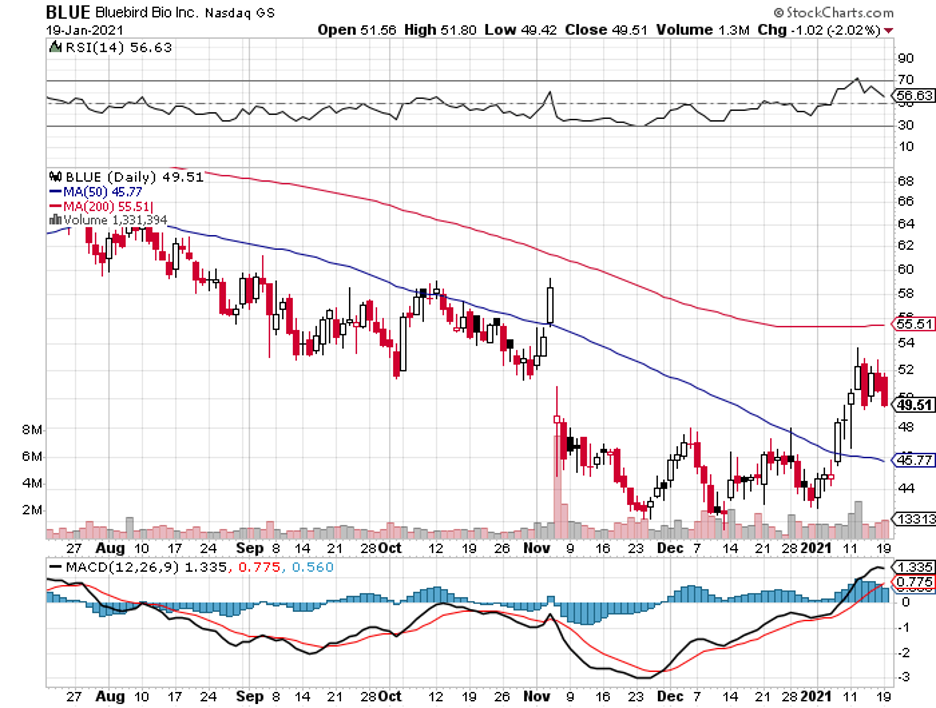
Global Market Comments
January 19, 2021
Fiat LuxFeatured Trade:
(WHY THERE’S ANOTHER DOUBLE IN CRISPR THERAPEUTICS)
(CRSP), (BLUE), (EDIT), (NVS), (GILD)
Legal Disclaimer
There is a very high degree of risk involved in trading. Past results are not indicative of future returns. MadHedgeFundTrader.com and all individuals affiliated with this site assume no responsibilities for your trading and investment results. The indicators, strategies, columns, articles and all other features are for educational purposes only and should not be construed as investment advice. Information for futures trading observations are obtained from sources believed to be reliable, but we do not warrant its completeness or accuracy, or warrant any results from the use of the information. Your use of the trading observations is entirely at your own risk and it is your sole responsibility to evaluate the accuracy, completeness and usefulness of the information. You must assess the risk of any trade with your broker and make your own independent decisions regarding any securities mentioned herein. Affiliates of MadHedgeFundTrader.com may have a position or effect transactions in the securities described herein (or options thereon) and/or otherwise employ trading strategies that may be consistent or inconsistent with the provided strategies.
This site uses cookies. By continuing to browse the site, you are agreeing to our use of cookies.
OKLearn moreWe may request cookies to be set on your device. We use cookies to let us know when you visit our websites, how you interact with us, to enrich your user experience, and to customize your relationship with our website.
Click on the different category headings to find out more. You can also change some of your preferences. Note that blocking some types of cookies may impact your experience on our websites and the services we are able to offer.
These cookies are strictly necessary to provide you with services available through our website and to use some of its features.
Because these cookies are strictly necessary to deliver the website, refuseing them will have impact how our site functions. You always can block or delete cookies by changing your browser settings and force blocking all cookies on this website. But this will always prompt you to accept/refuse cookies when revisiting our site.
We fully respect if you want to refuse cookies but to avoid asking you again and again kindly allow us to store a cookie for that. You are free to opt out any time or opt in for other cookies to get a better experience. If you refuse cookies we will remove all set cookies in our domain.
We provide you with a list of stored cookies on your computer in our domain so you can check what we stored. Due to security reasons we are not able to show or modify cookies from other domains. You can check these in your browser security settings.
These cookies collect information that is used either in aggregate form to help us understand how our website is being used or how effective our marketing campaigns are, or to help us customize our website and application for you in order to enhance your experience.
If you do not want that we track your visist to our site you can disable tracking in your browser here:
We also use different external services like Google Webfonts, Google Maps, and external Video providers. Since these providers may collect personal data like your IP address we allow you to block them here. Please be aware that this might heavily reduce the functionality and appearance of our site. Changes will take effect once you reload the page.
Google Webfont Settings:
Google Map Settings:
Vimeo and Youtube video embeds:
